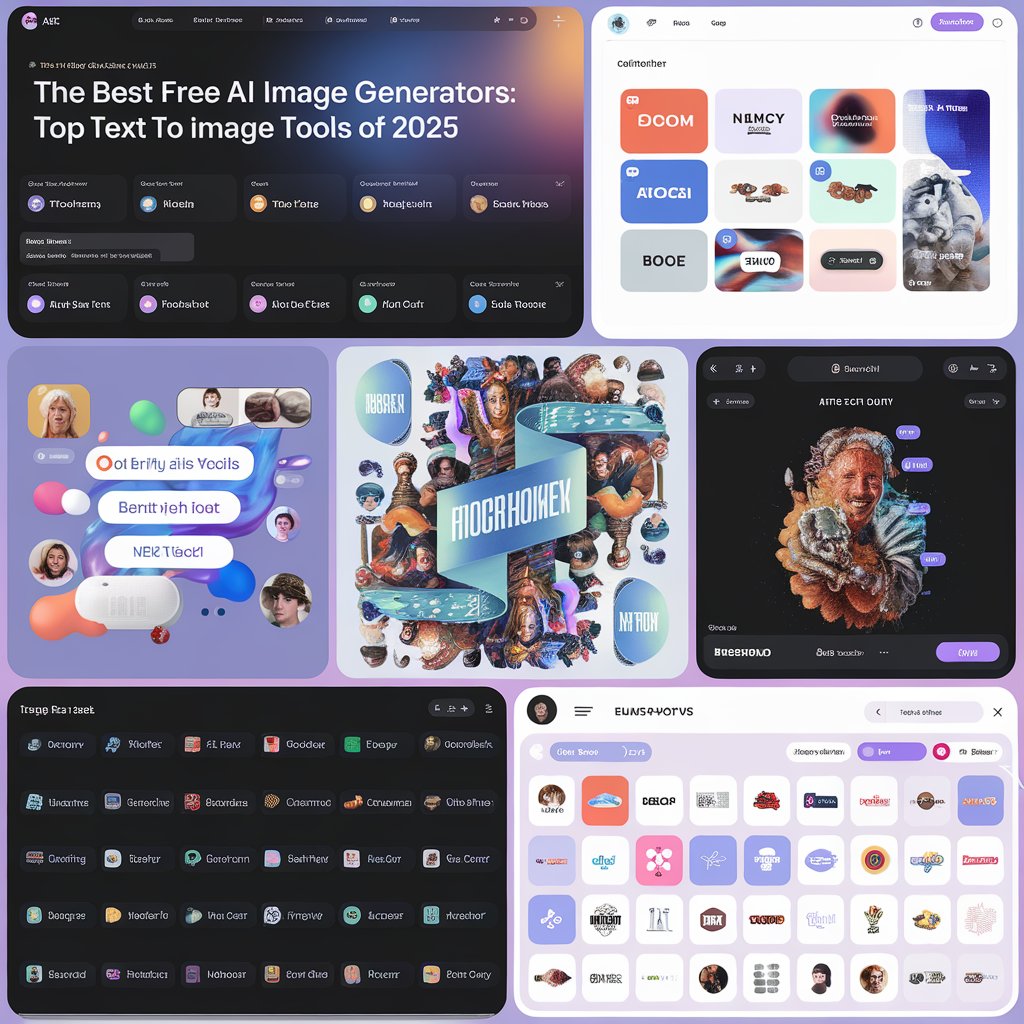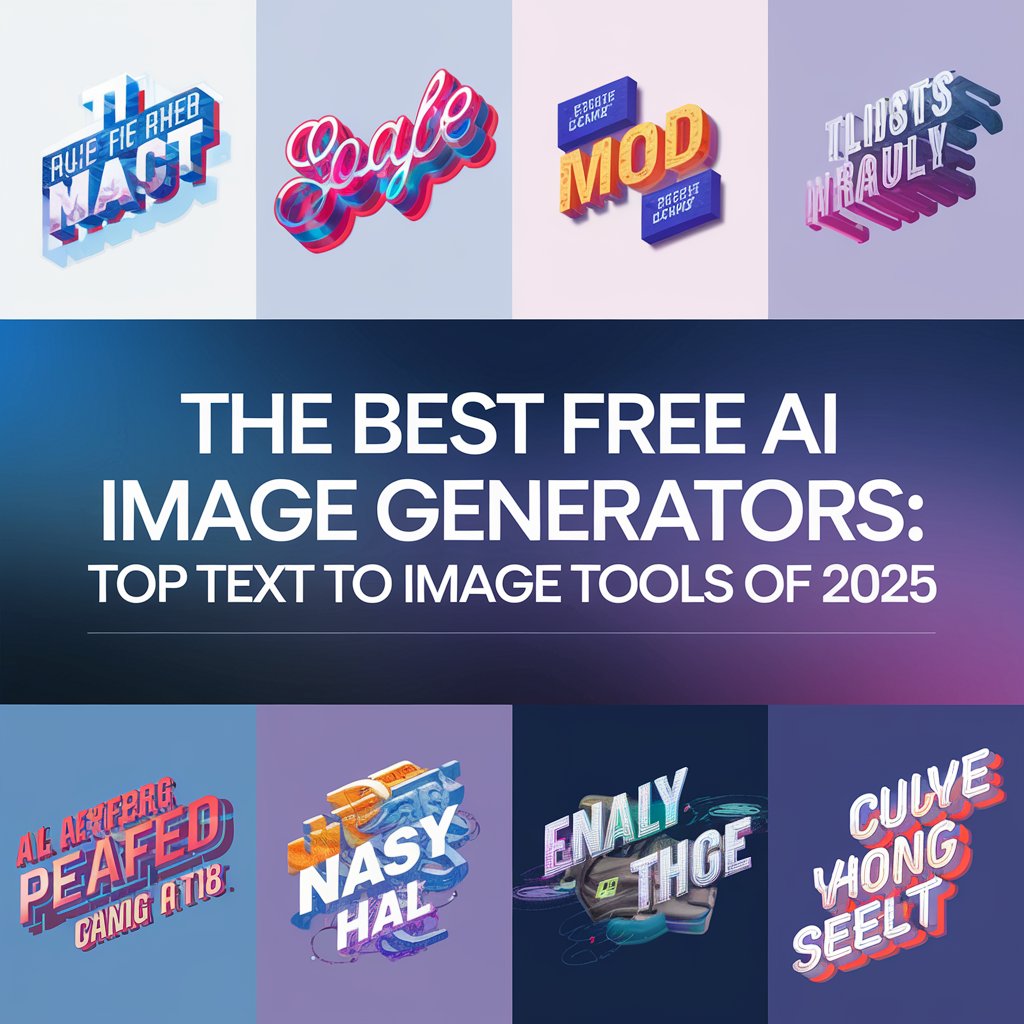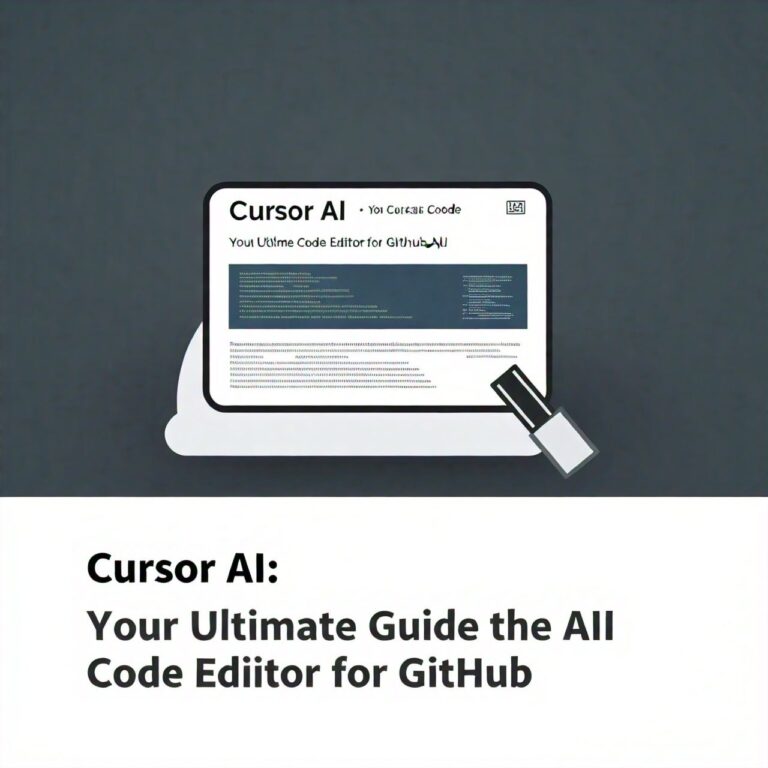As we venture into 2025, the landscape of AI image generation continues to evolve, offering remarkable tools for artists, marketers, and creatives alike. With the advent of sophisticated AI models, the ability to generate images from simple text prompts has reached unprecedented heights.

This article delves into the best free AI image generators available today, exploring how they work, their features, and tips for maximizing their potential.
What is the Best AI Image Generator for 2025?
Understanding AI Image Generation
AI image generation involves using advanced algorithms to create unique images based on textual descriptions. The best AI image generators leverage generative AI techniques, transforming a simple text prompt into a visually stunning output. These tools are not just limited to creating art; they can produce images suitable for stock use, marketing, and personal projects.
By utilizing vast databases and deep learning models, these generators can create images that reflect the nuances of the text provided, resulting in stunning AI-generated images that can rival traditional art forms.
Key Features of Top AI Image Generators
When evaluating the best AI image generators, several key features stand out. Firstly, the quality of the image output is paramount. High-resolution images with impeccable detail and color accuracy are essential for any professional use. Secondly, ease of use is crucial; a user-friendly interface enables both novices and experts to navigate the tool effectively. Many tools now offer a free plan, allowing users to experiment without financial commitment.
Additionally, the ability to customize the image style and generate images rapidly enhances the usability of these AI tools. Features like multiple style options, variations of the same prompt, and the ability to save and share images online are increasingly common among the top AI image generators.
Comparing AI Image Generators of 2024
As we look back at AI image generators in 2024, we see a significant evolution in capabilities and user engagement. Tools like Leonardo AI and Canva’s AI image generator have made significant strides in providing users with diverse functionalities. While some focus on generating AI art, others cater to commercial needs, allowing users to create stock images effortlessly.
The comparison between these tools reveals that while they may serve similar purposes, their unique approaches to AI image generation and the specific features they offer can greatly affect user satisfaction and the quality of the generated images.
How Do AI Image Generators Work?
Mechanics of Generative AI Models
At the core of any AI image generator is a generative AI model. These models are trained on vast datasets of images and corresponding text descriptions, learning to associate words with visual elements.

The training process involves sophisticated algorithms that analyze patterns in the data, allowing the model to understand how to generate an image that accurately reflects the input provided. This behind-the-scenes complexity is what allows an AI tool to convert text into a coherent visual representation, often producing outputs that are indistinguishable from human-created art.
Text to Image Process Explained
The process of converting text to image typically begins with the user inputting a text prompt. The AI model interprets this text and generates an image based on its learned associations. The effectiveness of this conversion relies heavily on the clarity and specificity of the text prompt.
For example, a simple text description like “a sunny beach” might yield a beautiful coastal scene, while a more detailed prompt might specify elements like “a sunset at a tropical beach with palm trees and a colorful sky,” resulting in a more tailored image output. This nuanced understanding of text allows for the generation of unique images that meet the user’s creative vision.
Common Technologies Behind AI Image Generators
AI image generators employ various technologies, including neural networks and deep learning algorithms. These technologies enable the processing of complex datasets, allowing the AI model to learn and improve over time.
Tools such as Generative Adversarial Networks (GANs) are commonly used in this domain. GANs consist of two neural networks—the generator and the discriminator—that work in tandem to create realistic images. This technology underpins many popular AI image generators, allowing them to produce high-quality outputs that appeal to a wide audience.
What Are the Best Free Online AI Image Generators?
Top Free AI Image Tools Available
Some of the best free AI image generators available in 2025 include platforms like DALL-E Mini, Artbreeder, and Dream by Wombo. These tools allow users to create images without incurring costs, making them accessible to anyone interested in exploring AI art.
Each tool offers unique functionalities, from adjusting image styles to creating variations of a generated image, catering to a diverse range of artistic needs. The availability of free AI image tools encourages creativity and experimentation, democratizing access to advanced technology.
Features of Free Online AI Image Generators
Despite being free, many online AI image generators maintain a high standard of quality. Most offer a straightforward interface, enabling users to input text prompts easily and receive instant results.
Additionally, these generators often feature built-in image editing capabilities, allowing users to adjust aspects like color, style, and composition after the initial image is created. The ability to generate multiple images from the same prompt is another noteworthy feature, providing users with various artistic options to choose from.
Limitations of Free AI Image Generators
While free AI image generators offer incredible opportunities, they also come with limitations. One common issue is the quality and resolution of the generated images, which may not always meet professional standards.
Additionally, free plans often limit the number of images users can generate within a specific timeframe or the features available compared to premium options. Some platforms may also impose restrictions on commercial use of generated images, which can be a significant factor for businesses looking to utilize AI-generated content in their marketing strategies.
How to Use an AI Image Generator Effectively?
Crafting Your Text Prompt
Crafting an effective text prompt is crucial for generating high-quality images. Clear and descriptive text helps the AI model understand what you envision, leading to better image outputs.
When using an AI image generator, consider incorporating specific details that will guide the AI in creating an image that aligns with your intent. For instance, rather than simply stating “dog,” a more elaborate prompt like “a fluffy golden retriever playing in a flower-filled meadow” will yield a more specific and appealing image.
Choosing the Right Image Style
Many AI image generators allow users to select different image styles, which can significantly impact the final product. Whether you prefer a realistic look, impressionistic art, or a cartoonish design, selecting the right style is essential for achieving your desired outcome.
Experimenting with various styles can help you discover what resonates with your creative vision. Tools that allow you to specify styles within your text prompts can enhance the customization of the generated images, making them more personal and unique.
Best Practices for Generating AI Images
To maximize the effectiveness of AI image generators, it’s important to follow best practices. Start with a clear concept and refine your text prompt based on the results you receive. Don’t hesitate to adjust the wording or add more details if the initial image doesn’t meet your expectations.
Additionally, take advantage of any editing tools provided by the generator to enhance the final image further. Finally, remember to explore the possibilities of combining different prompts or styles to create truly unique images that stand out.
Can You Create AI Art with Free AI Image Generators?
Exploring AI Art and Its Popularity
AI art has surged in popularity, with many artists and enthusiasts using free AI image generators to create stunning visuals. This rise can be attributed to the accessibility of these tools, which allow anyone with a simple text prompt to engage in art creation.
The fascinating intersection of technology and creativity has sparked discussions about the nature of art and the role of AI in our artistic endeavors. As more people discover the capabilities of these platforms, the definition of art continues to evolve, embracing the innovative possibilities that generative AI offers.
Comparing AI Art Generators vs. Traditional Art
When comparing AI art generators to traditional art forms, several distinctions emerge. Traditional artists rely on their skills, techniques, and personal expression to create art, while AI generators utilize algorithms and data to produce images.
Although AI-generated images can lack the emotional depth often found in human-created works, they offer an exciting alternative by providing unique perspectives and styles that may not have been conceived by human artists. This contrast raises questions about originality, creativity, and the future of art in a world increasingly influenced by technology.
Examples of Stunning AI-Generated Images
Stunning examples of AI-generated images can be found across various platforms, showcasing the impressive capabilities of these tools. From breathtaking landscapes to intricate abstract designs, the outputs often leave viewers in awe.
Some AI art generators, like Generative AI by Getty Images, have produced images that have been used in galleries and exhibitions, further blurring the line between traditional and digital art. These examples highlight the potential of AI image generators to create visually captivating works that inspire and engage audiences worldwide.




Leave a Comment